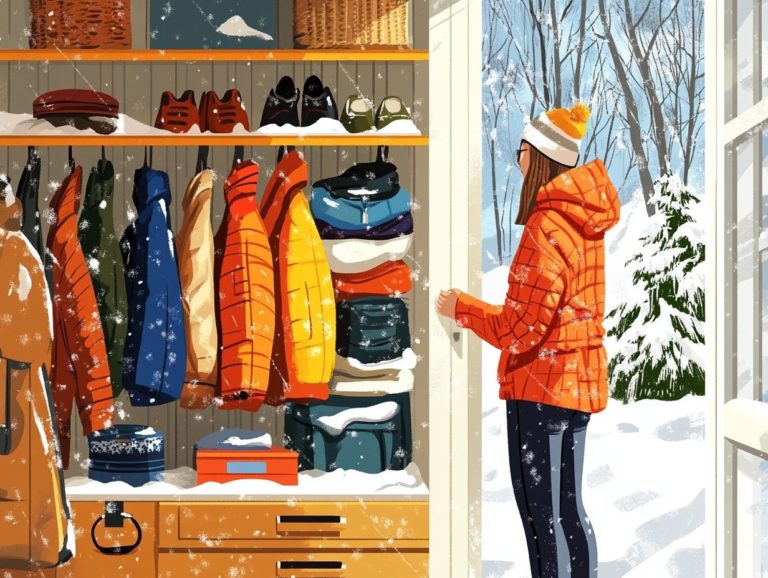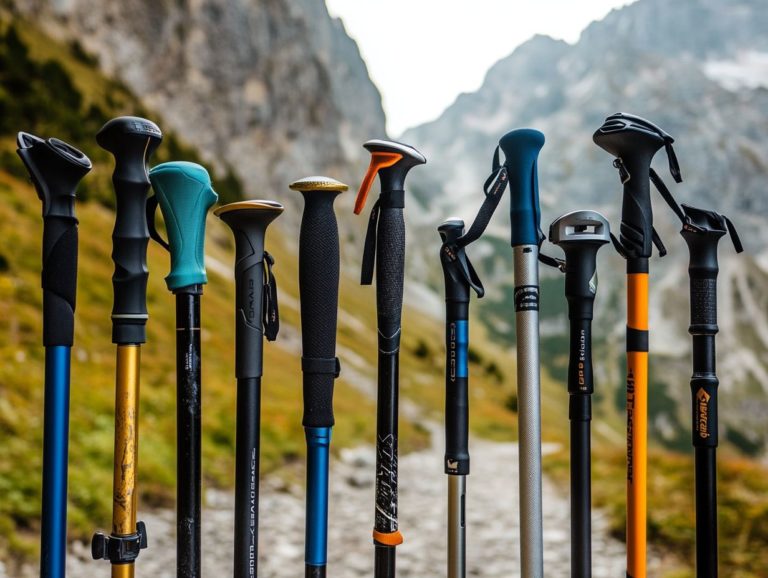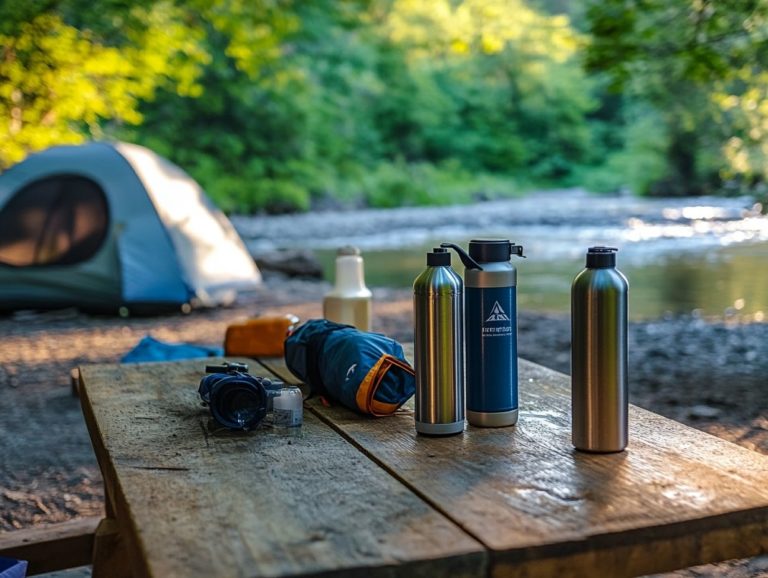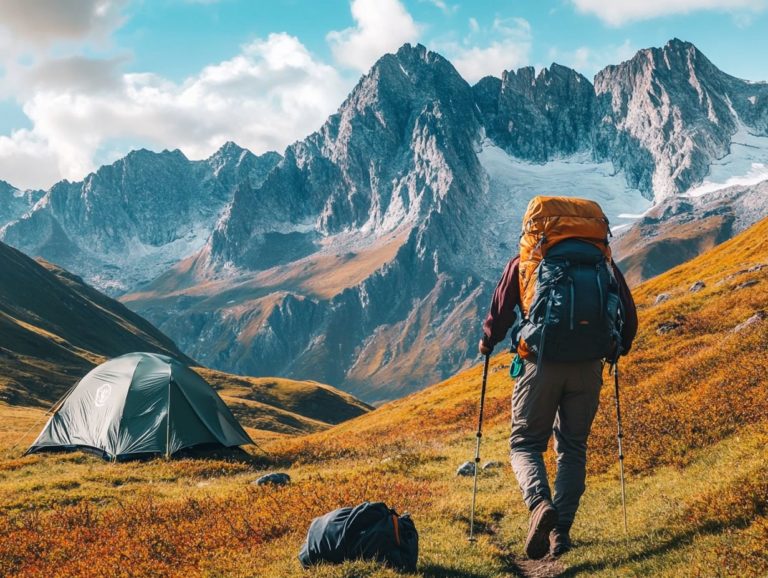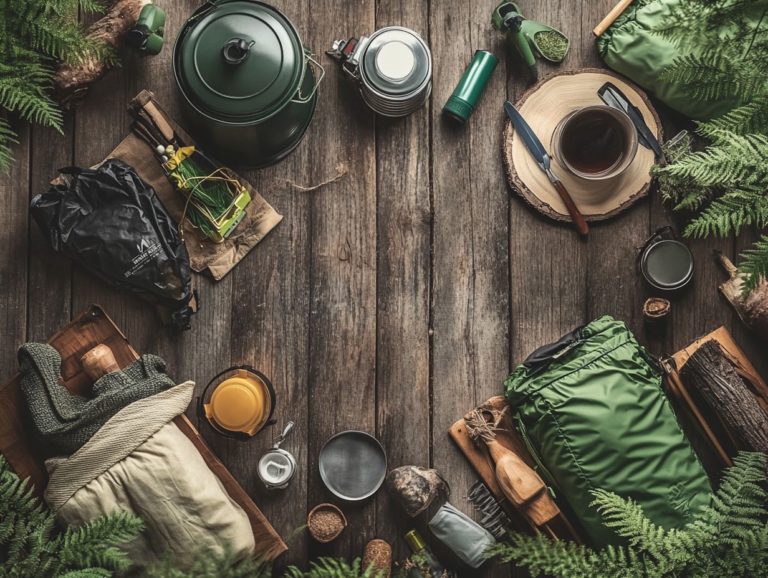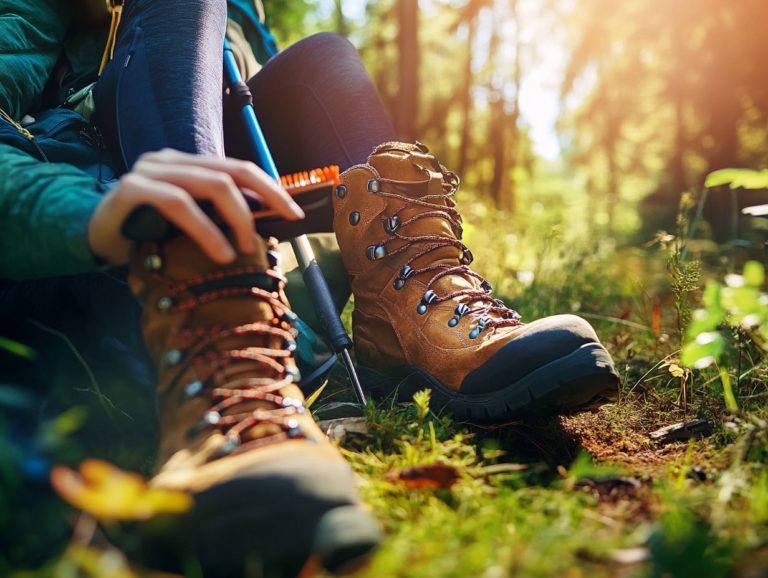What are Common Mistakes with Outdoor Gear?
When embarking on outdoor adventures, the right gear can truly transform your experience! Let s dive into how you can gear up for your next adventure!
Many enthusiasts inadvertently stumble into common pitfalls that diminish their enjoyment. Whether it s neglecting environmental considerations or failing to maintain their equipment, these oversights can lead to unnecessary frustration.
This article sheds light on these missteps while providing guidance on selecting the appropriate gear for various activities. It also provides essential tips for gear care and maintenance, ensuring you’re always prepared for your next adventure.
Contents
- Key Takeaways You Shouldn’t Miss!
- Overview of Outdoor Gear and Its Importance
- Common Mistakes with Outdoor Gear
- Tips for Choosing the Right Outdoor Gear
- Proper Care and Maintenance of Outdoor Gear
- Frequently Asked Questions
- What are common mistakes with outdoor gear?
- Why is it important to research and select the right gear for outdoor activities?
- What should I consider when selecting outdoor gear?
- How can checking the weather forecast help prevent mistakes with outdoor gear?
- What are some maintenance tips for outdoor gear?
- Why is it important to properly maintain outdoor gear?
Key Takeaways You Shouldn’t Miss!
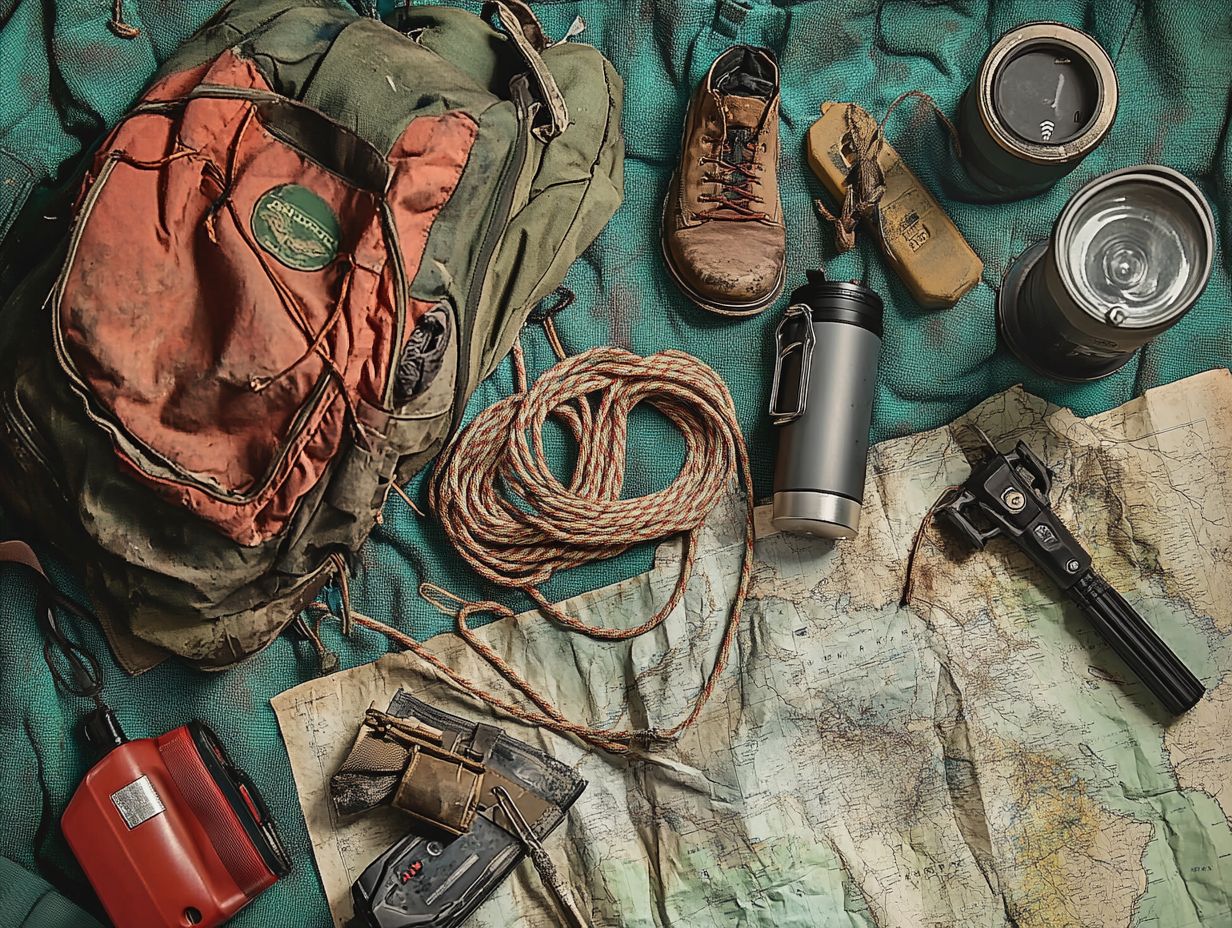
- Not considering the environment when purchasing outdoor gear can lead to discomfort, inefficiency, and even danger during outdoor activities!
- Buying the wrong gear for a specific activity can result in discomfort, poor performance, and potential accidents!
- Keep your gear in top shape to ensure you re ready for every adventure!
Overview of Outdoor Gear and Its Importance
Outdoor gear is vital for your safety, comfort, and performance during activities like hiking, camping, and backpacking. Whether you’re a beginner hiker or a seasoned explorer, grasping the importance of selecting the right gear can transform your experience from frustrating to truly enjoyable.
Lightweight equipment enhances your mobility, while proper footwear, tailored for various ground types, is essential. Additionally, a visit to your local community gear shop can offer invaluable insights into the best available options. There, you can test gear firsthand and receive personalized advice that aligns perfectly with your unique needs and the environments you ll be exploring.
Common Mistakes with Outdoor Gear
Common mistakes with outdoor gear can lead to discomfort and even perilous situations for hikers like yourself. Many novice hikers often overlook crucial factors, such as the environment, which greatly influences their gear selections.
Failing to take ground type or weather conditions into account can result in missteps, like choosing unsuitable footwear or neglecting to pack essential items. Moreover, disregarding proper maintenance of your equipment can jeopardize both safety and performance in extreme conditions. This underscores the importance of thorough preparation and knowledge-based decision making.
Not Considering the Environment
Failing to consider the environment when planning your hike can lead to being unprepared and facing potential dangers. Many beginner hikers overlook crucial factors such as weather conditions, ground type, and elevation gain.
Understanding the nuances of the environment is essential for selecting the right hiking footwear and equipment, ultimately ensuring both your safety and enjoyment on the trail.
For instance, if you’re hiking in rainy or snowy weather, waterproof boots and moisture-wicking layers are crucial to keep you dry and warm. On the other hand, tackling rocky or uneven terrain may require sturdy, ankle-supporting footwear with excellent traction to prevent slips and injuries.
Similarly, at higher elevations, where temperatures can drop significantly and conditions can change rapidly, having insulated layers and essential gear like trekking poles can truly make a difference.
By considering these distinct environmental factors, you can tailor your gear selections to better navigate specific challenges and elevate your overall experience on the trail.
Buying the Wrong Gear for the Activity
Selecting the wrong gear for your outdoor adventures can really dampen your performance and enjoyment. Many beginner hikers fall into the trap of buying general outdoor gear instead of specialized equipment designed for their specific activities. Imagine trying to tackle winter hiking without traction shoes footwear designed to provide better grip on icy surfaces or heading out on an extended backpacking trip with heavy, cumbersome gear.
This mistake can cause discomfort and increase the risks you face while exploring the great outdoors.
Understanding the nuances of various activities is essential. For example, if you’re a trail runner, you’ll want shoes with a lower profile and better grip. On the other hand, if you’re navigating rocky terrain, you need strong boots that support your ankles. Cyclists benefit from padded shorts and fitted jerseys to enhance comfort during lengthy rides, while climbers rely on harnesses and chalk bags to ensure safety and performance.
By carefully choosing the right gear, you can fully immerse yourself in the wonders of nature, keeping you safe while maximizing your comfort and enjoyment in the wild.
Not Properly Maintaining Gear
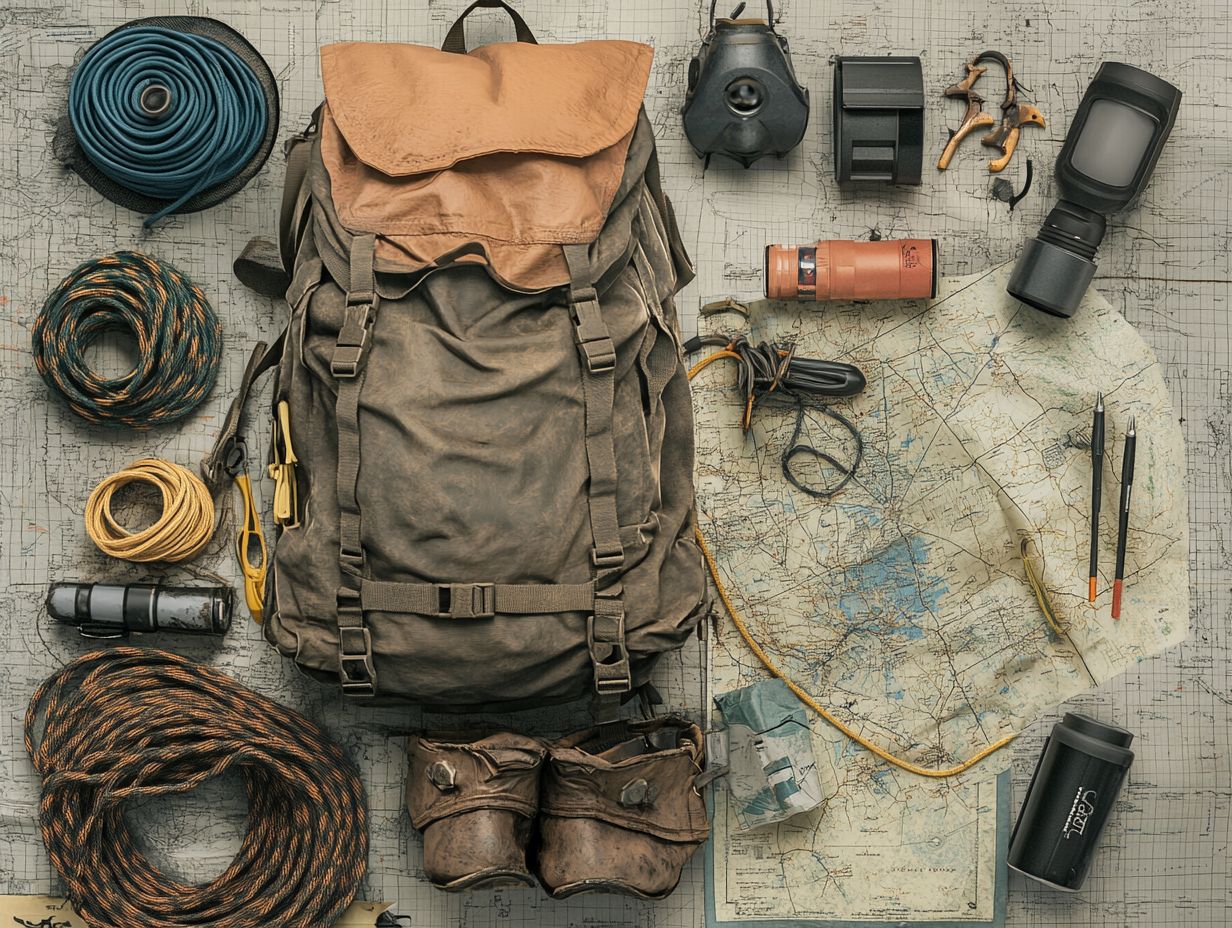
Neglecting proper maintenance of your outdoor gear is a common misstep that can lead to equipment failure and safety risks. Many hikers underestimate the significance of regularly checking their gear like ensuring your First Aid kit, a collection of medical supplies for emergencies, is stocked and that your clothing and footwear are in good condition especially before setting out on hikes in extreme weather.
Regular maintenance not only guarantees that your gear functions optimally but also extends its lifespan. Overlooking small problems can quickly escalate, leading to significant issues when you least expect them. For instance, a frayed strap on your backpack could snap under heavy loads, while worn-out soles on your hiking boots might result in slips or falls.
Don’t wait until it’s too late take action now to ensure your gear is always ready for adventure! To prevent such hazards, it s essential to:
- After each use, clean your gear.
- Store it in a dry place.
- Check for wear regularly.
Regularly addressing these concerns not only enhances your safety but also saves you money in the long run, as well-maintained gear typically lasts much longer.
Tips for Choosing the Right Outdoor Gear
Selecting the perfect outdoor gear requires careful research and thoughtful consideration of the many factors that pertain to your unique hiking needs and the environment you ll be navigating.
Whether you seek lightweight gear to boost your mobility or durable equipment designed to withstand the elements, grasping the intricacies of what suits your activities best can significantly enhance your outdoor adventures.
Before finalizing any purchases, consider visiting a local community gear shop. There, experienced staff can provide invaluable insights and help you explore options specifically tailored to your requirements. Additionally, join local hiking groups online to exchange gear tips and recommendations!
Researching and Testing Gear
Researching and testing outdoor gear before making a purchase can spare you considerable hassle during your adventures. By diving into reviews and seeking out insights from seasoned hikers, you can uncover the best products on the market. Many local gear shops even offer opportunities to test equipment in-store, giving you that invaluable hands-on experience when choosing your gear.
Exploring various online resources, such as dedicated outdoor forums and review sites, can further enrich your understanding. Take the time to examine customer feedback to gauge real-world performance, durability, and any potential pitfalls. Engaging with expert reviews, often penned by seasoned adventurers, can reveal those lesser-known features that might be critical for your specific activities.
Most importantly, prioritize testing gear for comfort and fit. Always try on gear before you buy. Ensure that items like backpacks and footwear adapt seamlessly to your body; discomfort can seriously detract from your overall hiking experience. A well-informed decision not only enhances your enjoyment but also minimizes the risk of gear-related mishaps in the great outdoors.
Considering the Activity and Environment
When selecting outdoor gear, it s essential to consider both the specific activity and the environmental conditions you ll face. Different weather patterns whether it s rain pouring down or snowflakes drifting lazily demand various layers of clothing and suitable waterproof gear to keep you comfortable and safe on the trail.
If you find yourself navigating steep, muddy hillsides, you ll want to invest in shoes that help you grip the ground better. Conversely, when hiking through dry desert landscapes, choosing breathable fabrics will help maintain airflow and keep you cool.
This level of preparation not only elevates your hiking experience but also reduces the risk of injury or discomfort. It allows you to fully immerse yourself in the breathtaking beauty of nature without the nagging concern of inadequate gear.
Investing in Quality Gear
Investing in quality outdoor gear is crucial for enhancing your performance and safety during hiking adventures. While it might be tempting to choose cheaper options, the durability and performance of high-quality gear often make the initial investment worthwhile.
Lightweight, premium gear can withstand challenging conditions while providing the comfort and support you need for a successful hike. Consider items like backpacks, tents, and footwear; the benefits of opting for higher-quality choices become crystal clear.
A reliable backpack doesn t just offer ample storage; it also distributes weight effectively, helping to minimize fatigue on long treks. Similarly, a well-constructed tent offers crucial protection from the elements, ensuring you have a secure shelter for a restful night.
Evaluate your gear options by taking the time to read user reviews, test the equipment when possible, and seek out reputable brands known for their robust construction and exemplary customer support. Choosing quality gear can lead to safer, more enjoyable outings that stand the test of time.
Proper Care and Maintenance of Outdoor Gear
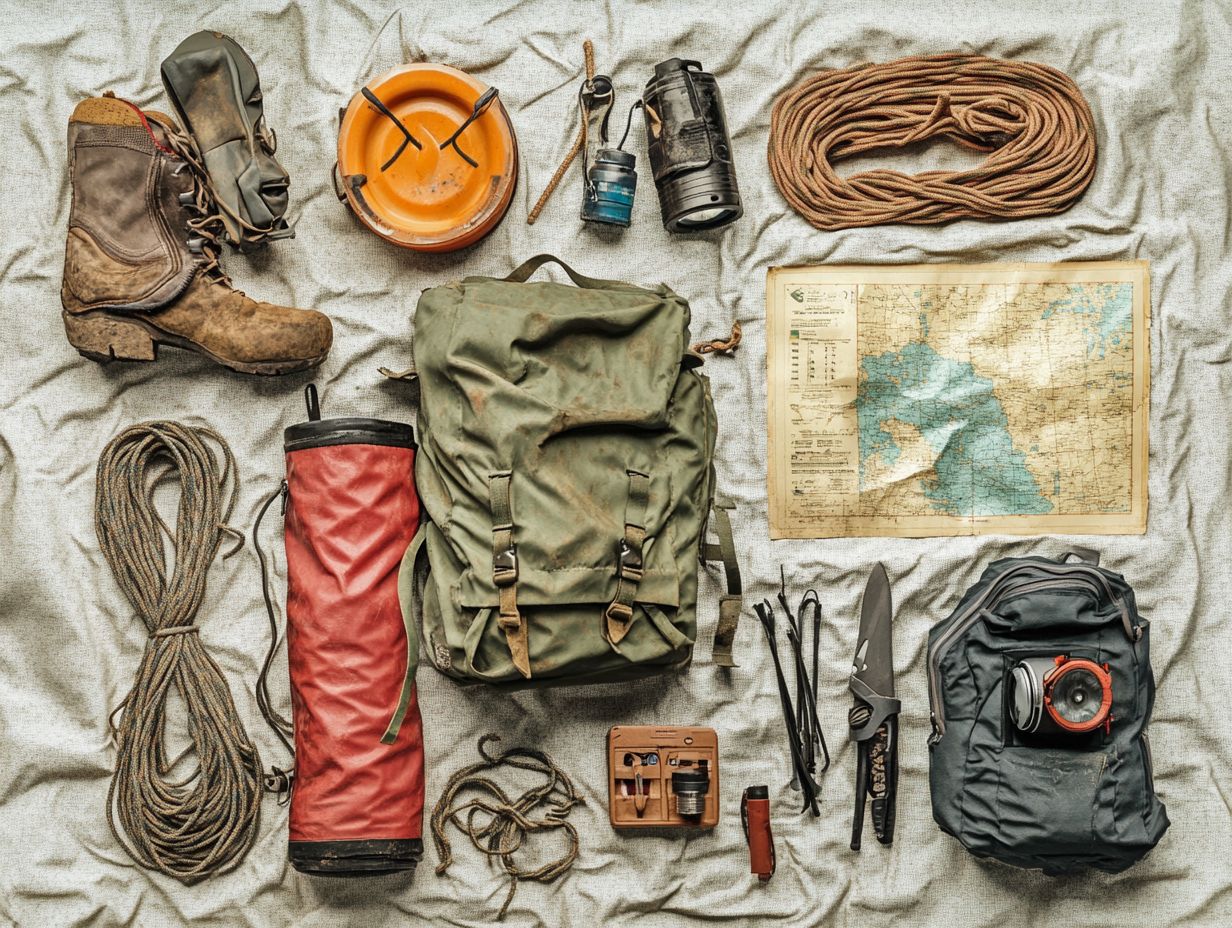
Proper care and maintenance of your outdoor gear are essential for keeping your gear ready for action every time you hit the trail! Engaging in regular maintenance practices like cleaning and inspecting your equipment can prevent potential failures and enhance your safety on the trail.
Ensure your First Aid kit is well-stocked and replace any worn or damaged gear. This proactive approach to gear care can significantly elevate your outdoor experiences.
Cleaning and Storing Gear
Cleaning and properly storing your outdoor gear is vital for maintaining its effectiveness and longevity. Regularly cleaning items like footwear and equipment can prevent the buildup of dirt and moisture that could degrade their performance over time.
Store your gear in a cool, dry place to safeguard it from damage and extend its usability. After each outing, adopt a thorough cleaning routine to keep your gear in peak condition. For instance, using a specialized cleaner designed for technical fabrics can enhance the effectiveness of cleaning your jackets and tents.
Regularly inspect zippers and seams for wear and tear, and apply a water-repellent treatment to preserve their waterproof capabilities. Opt for storage bags that allow your gear to breathe, rather than cramming everything tightly together, to prevent mildew and unwanted odors.
These proactive measures not only ensure functionality but also keep you ready for your next adventure.
Replacing Worn or Damaged Gear
Replacing worn or damaged outdoor gear is essential for your safety and performance during hiking trips. Many hikers overlook the signs of wear until they become serious issues, which can lead to dangerous situations.
Regularly checking your gear ensures both safety and enjoyment in the wilderness. Certain items, like hiking boots, tents, and backpacks, wear out over time.
Look for signs like uneven wear on your shoe soles, fraying straps on your backpack, or rips in your tent fabric. These are clear indicators that it may be time for an upgrade.
Check for issues like zippers that stick or buckles that don t secure properly. Keeping an eye on these details will help you ensure that your gear is reliable and safe.
Frequently Asked Questions
What are common mistakes with outdoor gear?
Common mistakes include not researching the right gear for your needs, failing to check the weather forecast, and neglecting maintenance after use.
Why is it important to research and select the right gear for outdoor activities?
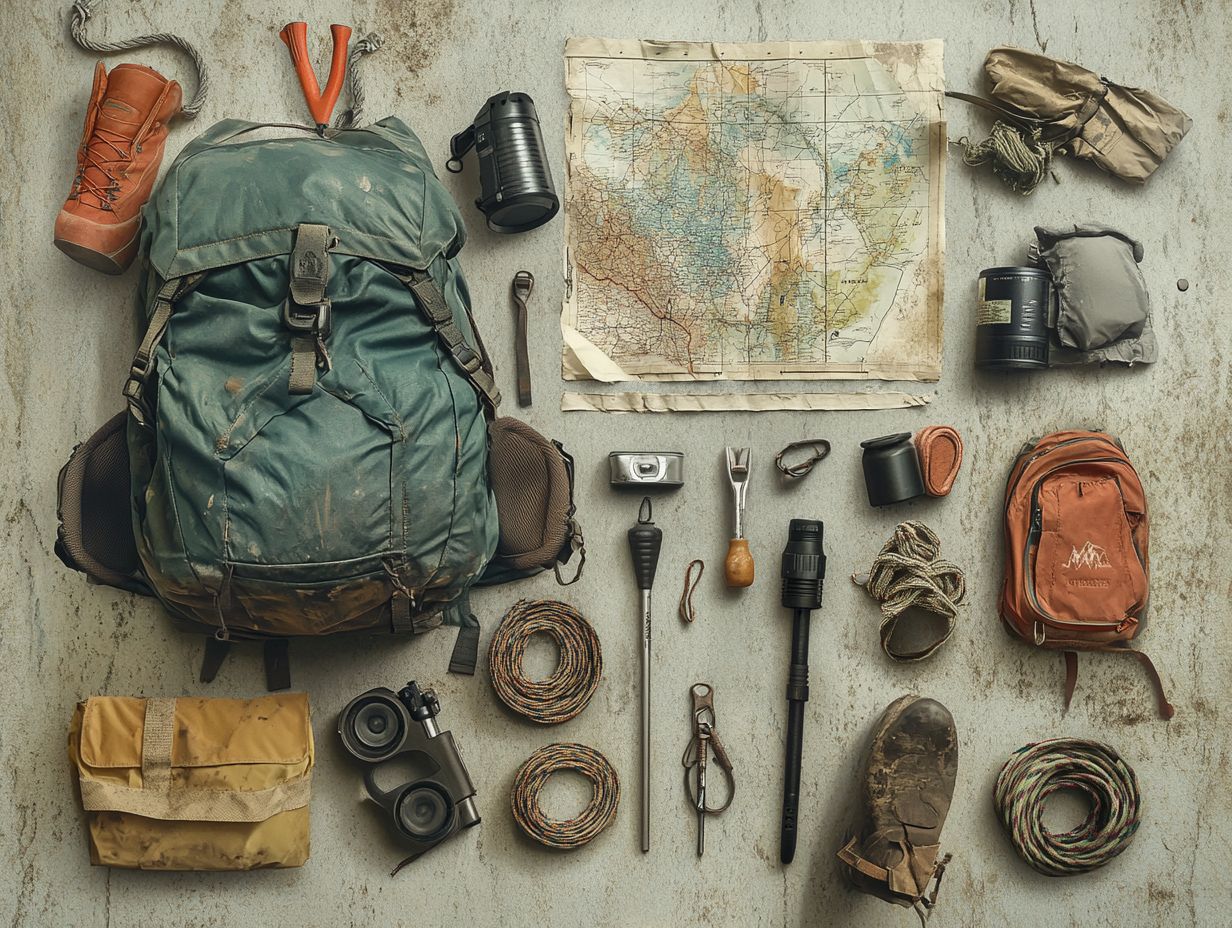
Choosing the right gear ensures you stay safe and comfortable during your adventure. The wrong equipment can lead to discomfort or dangerous situations.
What should I consider when selecting outdoor gear?
Consider the type of activity, weather conditions, terrain, and your personal preferences. Also, check the quality and durability of the gear to ensure it lasts.
How can checking the weather forecast help prevent mistakes with outdoor gear?
Checking the weather helps you pack appropriately. Knowing what to expect allows you to choose the right gear and be aware of any potential hazards.
What are some maintenance tips for outdoor gear?
Regularly clean and dry your gear after each use. Store it in a cool, dry place and inspect it often for wear and tear.
Why is it important to properly maintain outdoor gear?
Proper maintenance can prolong the life of your equipment and ensure it functions correctly. Neglect can lead to costly repairs or replacements.

